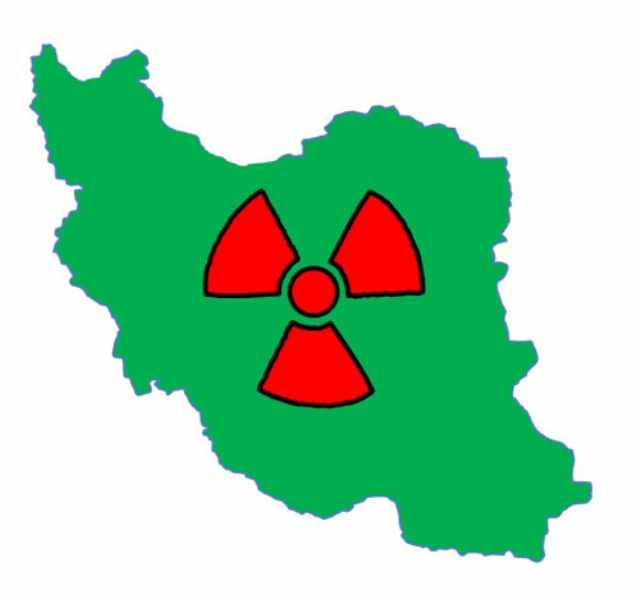Iran's nuclear program comes out of the closet
I've been reporting on Iran's nuclear weapons program for more than thirty years, and was the first to notice that Iran had signed a consulting agreement with Pakistan's A.Q. Khan to build uranium enrichment centrifuges. I was nominated for the Nobel Peace Prize in 2006 because of that reporting on Iran.
So Iran's nuclear chicanery has few surprises for me. For the past twenty years, the Iranian regime has played a nuclear cat and mouse game with the International Atomic Energy Agency (IAEA) in Vienna, the UN's so-called nuclear "watchdog."
But all that changed recently.
In February, the former head of Iran's Atomic Energy Organization, Ali Akbar Salehi, told a domestic television interviewer that the regime has now "crossed all the scientific and technological thresholds necessary" for producing nuclear weapons.
So do we have the bomb or not? the interviewer asked.
Salehi's response was unambiguous. "Let me give you an example. What does it take to make a car? You need a chassis, an engine, a wheel, a gearbox... If you are asking me if we built the gearbox and the engine, my answer is, yes. Each part has its own role."
Salehi's revelations were not an accident or a mistake. They were just the first course.
In April, Mahmoud Reza Aghamiri, a nuclear scientist said to be close to Supreme Leader Khamenei, said that Khamenei "can change his stance tomorrow" on building nuclear weapons, and that the regime "has the capability" to make the leap because building the bomb is "not complicated."
Kamal Kharazzi, a former foreign minister, told Al Jazeera in early May, “We have no decision to build a nuclear bomb but should Iran’s existence be threatened, there will have no choice but to change our military doctrine."
These are all serious warning signs, and they mark a dramatic departure from the previous denials and demurrals one was used to hearing from regime leaders.
The real question is: does Iran already have the bomb? If they have all the components, the delivery system, and the warhead design, all they lack is the weapons grade uranium (WGU).
The IAEA recently said that Iran can produce enough WGU from existing stockpiles in just seven days to produce its first nuclear weapon, and enough for thirteen bombs in just five months.
That means Iran is a nuclear threshold state. Today. For all the bluster from politicians that they will never allow Iran to go nuclear, they have done it.
What are we going to do about it? The answer is: nothing. We're just going to sit back and pretend there's nothing to see here, until the next Iranian attack on Israel includes a salvo of nukes.
The Biden White House has allowed one more red line to be crossed without a peep. We ignore it at our peril.

Image: Futureatlas.com
FOLLOW US ON
Recent Articles
- New York Greenlights Quarantine Camps
- Reality Check for Democrats
- A MAGA Siege of the Democrats’ Deep State
- Why Incel and 4B Culture Matter
- Defending Donald Trump: A Response to Jeffrey Goldberg and The Atlantic on the Signal Leak
- Are Judges Complicit in Lawfare?
- Deep Dive: The Signal Chat Leak
- Mark Steyn’s Reversal of Fortune
- Where We Need Musk’s Chainsaw the Most
- Trump Is Not Destroying the Constitution, but Restoring It
Blog Posts
- A Ph.D. in ‘Molecular and Cell Biology’ shows the difference between credentials and knowledge
- Nasty Venezuelan migrant who flashed taxpayer dollars and urged squatting, gets thrown out
- Watch white leftist women’s brains breaking—and repairing—in real-time
- The last, best hope ...
- In Pennsylvania, are Democrats stealing votes again?
- Knife control comes to the U.K.: Prime Minister Starmer bans Ninja swords
- This Tuesday, Wisconsonites must vote for Brad Schimel for the State Supreme Court
- Was Vietnam worth the cost?
- Democrats should get a clue from the Palestinians who are now marching against Hamas
- Trump takes on Fauxahontas's brainchild
- Consumer Sentiment Survey: This too shall pass
- If they only had knife control....
- Newsom and Walz struggle to appear normal
- Anti-Trump lawfare: yes, it's a conspiracy
- Criminal attack? You're on your own.






